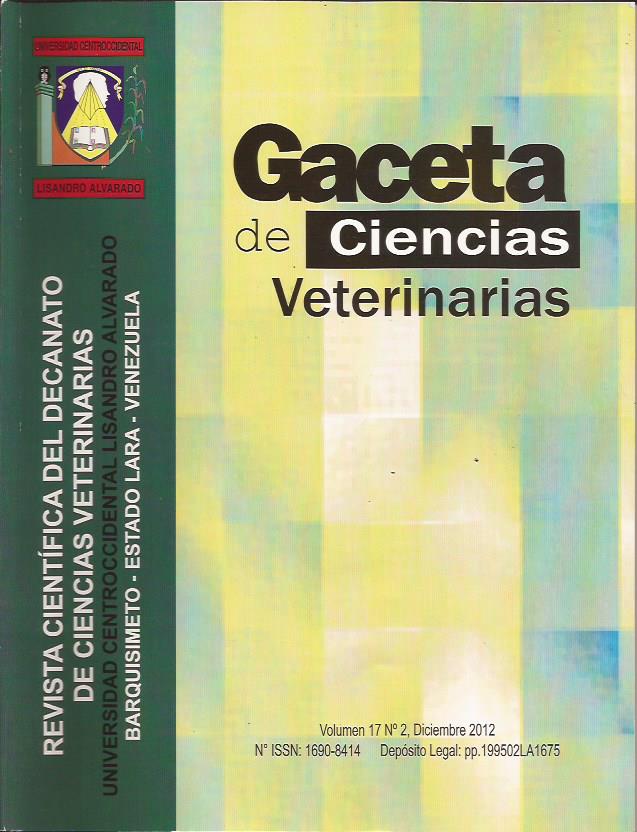Exsanguination and tissues fixation in embalmed corpses
Keywords:
Exsanguination, fixation, conservative solution, formaldehydeAbstract
Animal exsanguination under general anesthesia is part of procedure to prepare corpses for teaching in Veterinary Anatomy. In order to assess whether the bleeding during this process influences tissue fixation, a study was made. The animals were subjected to general anesthesia with propofol (4-6 mg/kg), exsanguination was performed by incision of the common carotid artery and amount of blood collected was measured. Once the death was verified, corpses were perfused with a fixing-conservative solution by arterial way, and were kept at room temperature for 24 hours and then they were refrigerated at 4 °C about one week. After this period they were dissected and eviscerated to perform macroscopic evaluation. Aspects evaluated were degree of fixation of lungs, heart, liver, spleen, intestines, kidneys and muscles, as well as, presence or absence of putrefaction odor. Results showed that animals had an exsanguination average of 4.04%, the organs with highest percentage of bad fixation were liver, spleen, kidneys and intestines. Statistical analysis was performed whit the SPSS 19.0 software using contingency tables (Somers gamma and d coefficients), which showed that there are no statistically significant differences for fixation between animals that lost more blood and the who lost less blood. We had concluded that the amount of blood lost during exsanguination has no significant influence on the degree of corpse tissue fixation.
Downloads
References
[2] Janczyk P, Weigner J, Luebke-Becker A, Richardson K, Plendl J. A pilot study on ethanol-polyethylene glycol-formalin fixation of farm animal cadavers. Berl Munch Tierarztl Wochenschr 2011; 124(5-6): 225-227.
[3] Céspedes R, Perozo Prieto E, Pérez-Arévalo M, Riera Nieves M, Vilá Valls V, Reyes K. Anatomía del sistema biliar del hígado en el canino. Rev Cient-Fac Cien V 2008; 18(6): 667-673.
[4] Ajayi I, Shawulu1 J, Ghaji A, Omeiza G, Ode O. Use of formalin and modified gravity-feed embalming technique in veterinary anatomy dissection and practicals. J Vet Med Anim Health 2011; 3(6): 79-81.
[5] Fonseca-Matheus J, Rojas E, Peraza M. Efecto de una solución a base de sulfato de cobre y baja concentración de formol en la preparación de animales para disección. Gac Cs Vet 2013; 18(2): 41-46.
[6] Helander K. Kinetic studies of formaldehyde binding in tissue. Biotech Histochem 1994; 69: 177-179.
[7] Nakamura K, Hatano Y, Hirakata H, Nishiwada M, Toda H, Mori K. Direct vasoconstrictor and vasodilator effects of propofol in isolated dog arteries. Br J Anaesth 1992; 68: 193-197.
Published
How to Cite
Issue
Section
Gaceta de Ciencias Veterinarias se apega al modelo Open Access, por ello no se exige suscripción, registro o tarifa de acceso a los usuarios o instituciones. Los usuarios pueden leer, descargar, copiar, distribuir, imprimir y compartir los textos completos inmediatamente después de publicados, se exige no hacer uso comercial de las publicaciones. Para la reproducción parcial o total de los trabajos o contenidos publicados, se exige reconocer los derechos intelectuales de los autores y además, hacer referencia a esta revista. La publicación de artículos se hace sin cargo para los autores. Los trabajos pueden consultarse y descargarse libremente, y de manera gratuita, en extenso en versión digital, desde su enlace Web institucional. Los textos publicados son propiedad intelectual de sus autores. Las ideas, opiniones y conceptos expuestos en los trabajos publicados en la revista representan la opinión de sus autores, por lo tanto, son estos los responsables exclusivos de los mismos.



